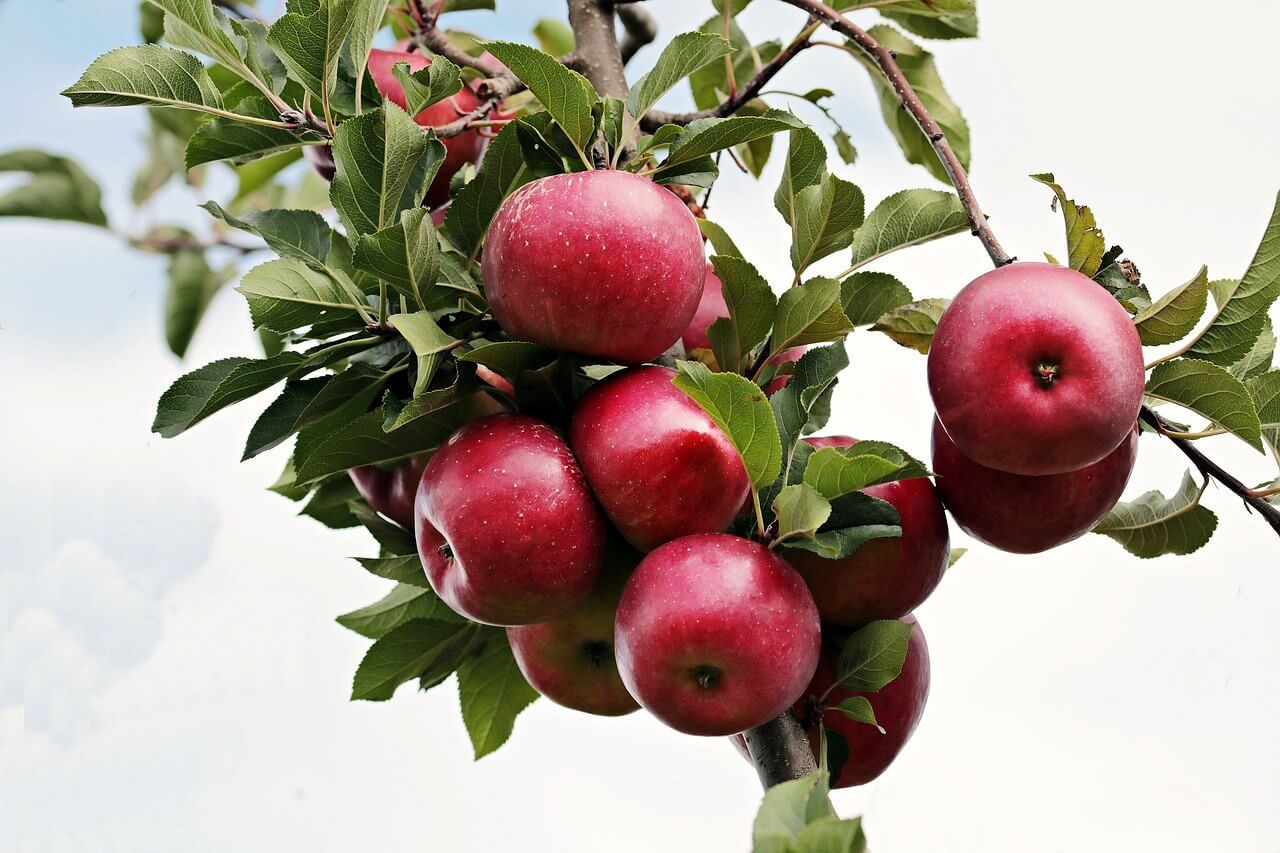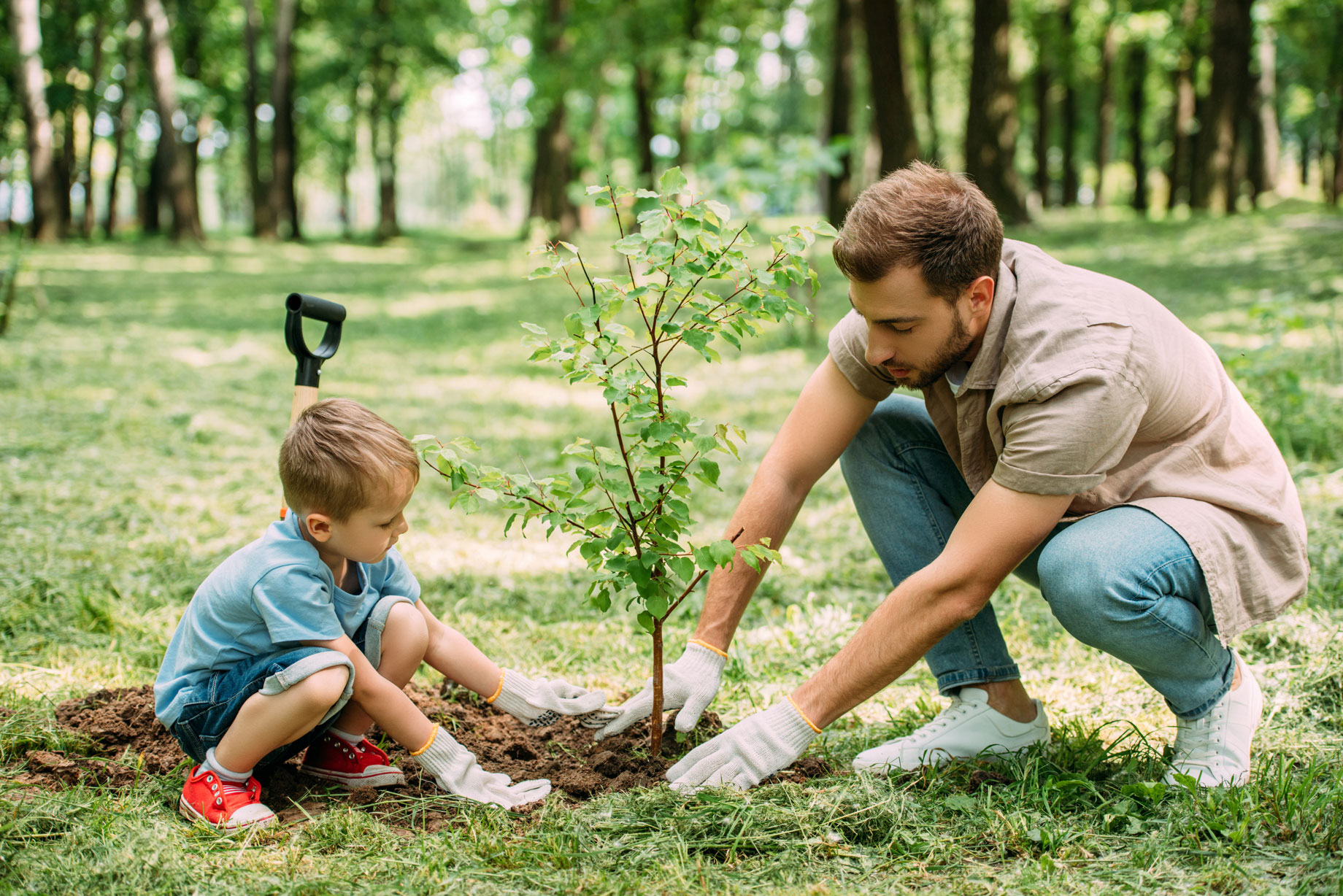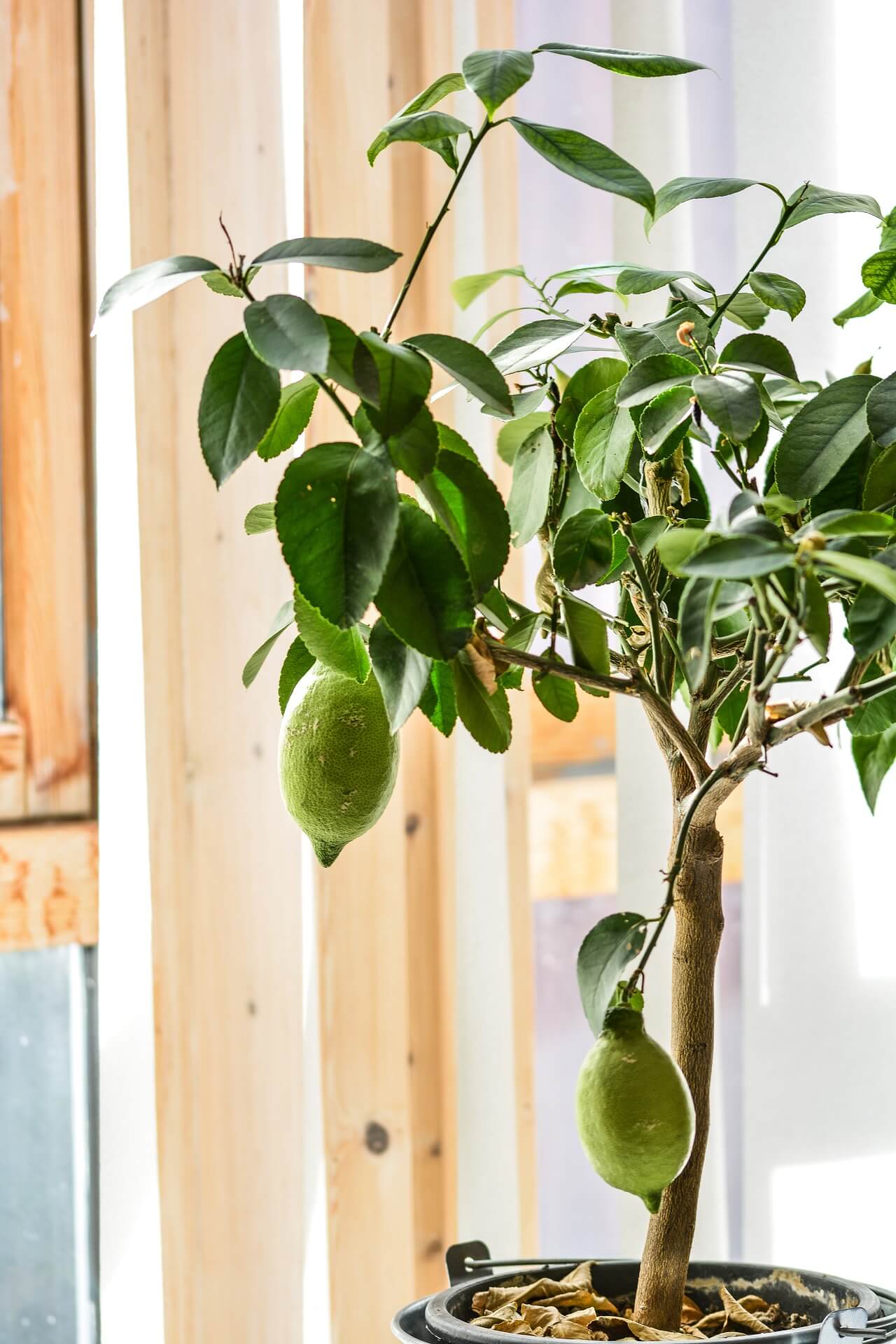
Japanese Garden Tools Vs. American: What’s the Difference?
You may have seen Japanese gardening tools popping up more in stores and online. Sure, they’re… Read More

It’s easy to love backyard fruit trees. Unlike vegetable gardening, which requires near daily care throughout the growing season, fruit trees practically raise themselves. And then they reward you with tart-sweet cherries, juicy plums, or crisp apples. If you have the room for it, the best-return-for-your-labor plant you can add to your garden is a fruit tree.
Most of the work is put in up front. Planting the tree takes less than twenty minutes, but there’s research and decision making that needs to happen prior to that time, to help your new tree flourish. Here’s what you need to know.

Site selection: All fruit trees need sunlight—eight hours a day is best. Also, those hours should fall in the hottest part of the day: between 10am and 4pm. Fruit requires heat and light to ripen and become sweet, so, make sure your location will support a tree before you invest time and money.
Fruit trees will be in place for years to come, so plan for the future. Are there other trees nearby that will grow and eventually shade your tree? Will your tree grow and shade your garden or flowerbeds? Are there power lines or other obstacles your tree may grow into? (avoid planting within ten feet of water or sewage lines). Plan not only for this year, but for the next fifty.
Consider water issues. Are you planting in the middle of a lawn or in a garden border that’s watered by a sprinkler system? Trees need infrequent and deep watering, but lawns and flowers thrive on frequent, shallow water. Make sure you’ve picked a location that is compatible with the needs of a fruit tree. And avoid areas that have poor drainage or strong winds.

Tree choice: Pick a fruit you love to eat—but also make sure it grows well in your region. Apricots are delicious, but if your area gets summer rains the fruit may crack open. Certain cultivars can help sidestep some problem. For example, those who want to grow figs in cooler regions must pick a short season variety. And sometimes it’s best to accept that your favorite fruit is incompatible with where you live and grow a second or third favorite. Set yourself up for success, not disappointment.
Another thing to be aware of is pollination. Some trees are self-fertile and pollinate on their own, but others need a partner tree planted nearby to cross pollinate with. Apple trees are an excellent example of this. Unless they are a self-fertile variety (like Granny Smith or Braeburn), they must be matched with a compatible tree that blossoms on the same schedule (there are charts you can find online that will clarify which trees are compatible matches).
Finally, consider tree size. Most trees can be grown as dwarf, semi-dwarf, or standard size, depending on what sort of roots the tree has been grafted onto. Dwarf trees grow 8-10 feet tall, depending on conditions and pruning. Semi-dwarf grows 12-15 feet tall and wide (cherry trees tend to be a little bigger). Standard trees grow 18-25 feet or more. It’s good to keep this in mind as you think about harvesting your trees. Most backyard gardeners opt for dwarf or semi-dwarf trees.

When to plant: The best time to plant is at the tail end of winter in your region. This allows the tree to take advantage of spring rains and settle in before the growth season and stress brought on by hot summer temperatures. If you visit reputable nurseries at this time of year, you can purchase what is called “bare root” fruit trees (dormant trees not planted in a pot with soil). Bare root trees may look like spindly twigs, but they adapt well and grow quickly.
People often buy fruit trees later in the spring. These trees come planted in pots and will have leafed out—or may have their roots and surrounding soil wrapped in burlap. It’s best to plant container or burlap-ed trees as soon as you can, or to transfer them into a larger pot with additional potting soil if you are unable to plant them within a few weeks.

How to plant: Clear any weeds or grass from a circular area two feet on all sides from where you plan to plant your tree. The hole you dig should be double the size of the root ball of your tree, and about the same depth. If working with a container or burlap-ed tree, loosen the root ball a bit. Check for any roots that may be circling in the pot and detangle them slightly before placing in the hole (don’t remove all the soil, just loosen it up around the edges). You may want to mound some soil at the bottom of the hole and drape any loose roots on either side.
Good tools for this job include our hoe and cultivator set for weed removal (or a hori hori), and a sturdy shovel. Our most popular shovel (and most satisfying to use) is this Super Penetration Shovel, which makes quick work of any digging. If your soil is already cultivated and loose, you could use a straight spade or digger. If your soil is particularly compacted, you may want to loosen it up with a garden fork before trying to dig.
Once your hole is complete, position your new tree so the base of the tree trunk where the roots begin to spread out—called the crown flare—is at the soil line. Backfill the hole with the soil that was dug out and tamp down until the soil is firm, the tree is supported, and the trunk cannot be easily wiggled back and forth. Water the tree well and check over the next few days to make sure it doesn’t settle too deeply in the soil. There is no need for fertilizer or soil amendment at planting time.

Maintenance: Young fruit trees need about an inch of water a week, which means additional irrigation in the dry months. It’s important to water slowly and deeply—and not just at the tree’s trunk, as the root system will spread out on all sides. Consider using extra soil to build a berm encircling the tree, about two feet out, to create a soaking basin. You can fill it up with water that will soak in slowly. Just make sure to disassemble the berm when the seasons change and it begins to rain, as holding too much water can lead to root rot.
Fruit trees will need to be pruned twice a year, but beyond that there is little maintenance.You can prune yourself, or hire a professional (make sure they have experience with fruit trees, specifically). Pruning is a complicated topic and deserves some research, but at the very basics you want to remove dead, diseased, or damaged branches. Make sure to clean your clippers before and after, and don’t remove more than 20% of your tree mass. Most people prune very lightly in the first years of a tree’s lifespan.

Container plantings: It is possible to grow fruit trees in containers, but the containers will need to be large. A healthy fruit tree will eventually need a container that is two or even three feet in diameter (citrus can often be planted in smaller containers). Use potting soil—not topsoil, which will become compacted—and keep an eye on the moisture level of the soil, as containers dry out faster than in-ground plantings. They also benefit from a light annual fertilizing. Make sure to only plant dwarf varieties in containers and don’t skip on pruning.
It takes a few years for new fruit trees to begin producing (three to five years, depending on the type of fruit). This requires patience, but pays off in peaches, pears, and plums for years to come. Just make sure you beat the birds to your harvest—or drape your trees in bird netting, so you don’t have to fight them for it. After all that waiting, you’ll have earned the sweet reward.
***
Tara Austen Weaver is a writer, editor, avid gardener, and author of Growing Berries and Fruit Trees in the Pacific Northwest, and the forthcoming Little Book of Peonies, and Little Book of Dahlias (Sasquatch, 2022). She tends an orchard of 22 fruit and nut trees, and is always trying to find room for one more.